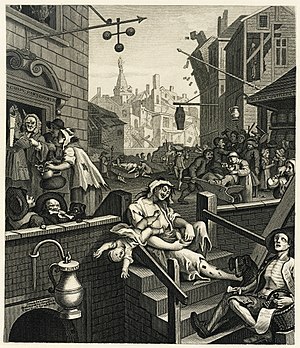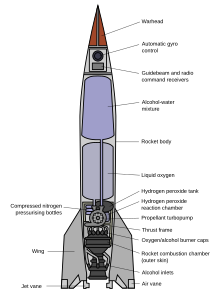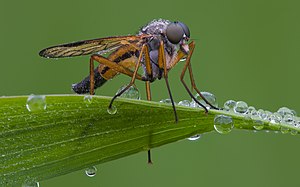Wikipedia:Wikipedia Signpost/2009-01-24/SPV
 |
|---|
|
| ||
| Volume 5, Issue 4 | 17 January 2009 | About the Signpost |
|
| ||
| (← Prev) | 2009 archives | (Next →) |
|
| ||
|
| |
| Home | Archives | Newsroom | Tip Line | Shortcut : WP:POST/A |
|
| |
Jimbo requests that developers turn on Flagged Revisions
On Wednesday Jimbo Wales asked the Wikimedia Foundation to turn on Flagged Revisions on the English Wikipedia on his "personal recommendation". Wales also cited the poll on the proposed implementation of Flagged revisions. The move has inspired much controversy and discussion, including a rejected request for arbitration that has called Wales' unique role as "founder" on Wikipedia into question.
Much of the opposition to the request stems from the fact that the poll closed at a 60/40 split, not the consensus that is usually required for such decisions. Erik Möller, the Deputy Director of the Wikimedia Foundation, previously stated that "a very large majority, at least two thirds, is generally necessary".
High profile vandalism
In explaining his request, Wales referred to an article by The Washington Post published the same day with Wales stating, "This nonsense would have been 100% prevented by Flagged Revisions". The article, entitled Kennedy, Byrd the Latest Victims of Wikipedia Errors, covers vandalism to the biographies of US Senators Edward Kennedy and Robert Byrd, describing them as an "ordeal" and "death by Wikipedia" in the opening sentence. Their biographies were edited by anonymous IPs to incorrectly state that both senators were dead; the changes were reverted within five and four minutes, respectively.
Flagged Revisions poll
The Flagged Revision poll, which proposed a limited trial of the extension on a subset of articles, ran from January 2 through January 23. It was closed two days after Wales made his announcement, with a final tally of 429 in support, 281 in opposition, 9 neutral (59.7% in support, 39.1% in opposition, 1.3% neutral). However, interpretation of the results is clouded by the mix of rationales in opposition. Many opposed the extension in principle, as a contrary to the "anyone can edit" spirit of Wikipedia. Another significant portion of those opposed were concerned about the particular proposed implementation, and editors are still working to forge a compromise on the details of the trial to satisfy that group.
Wales' interpretation of the poll is limited to a technical request to the developers to turn the extension on, and place control of the extension in the hands of the project's bureaucrats. Thus, the proposal does not detail what pages will have flagged revisions enabled, just a code change in the site's configuration file. Some proposed trials are detailed here, but were not a part of the poll. As a result, it remains to be decided how the community will proceed if Wales' request is granted. Brion Vibber, the Wikimedia Foundation's Chief Technical Officer, stated on Jimbo's talk page that Flagged Revisions would not be enabled by the foundation "before working out some very specific parameters for the test first".
Debate over using Flagged Revisions
Discussion has erupted, following the request, on Wales' talk page, the request for arbitration, and the many pages that make up the proposal and poll in question. At the voting page, many editors expressed concerns that Flagged Revisions would cause the project to become less open, and that this violated the core principle that "anyone can edit". Other users asserted that enabling flagged revisions on a page is far less restrictive than enabling semi-protection, and could be used as a substitute. Much of the opposition appears to stem from the fact that the proposal does not propose a specific trial, and is too vague—editors oppose for reasons that are applicable to a particular trial. Many editors on both sides of the debate feel very strongly, and some have threatened to resign. Other concerns expressed by opposing editors include fear of a large backlog of “unsighted” revisions and additional complexity and bureaucracy.
Proponents of Flagged Revisions hope that it will allow the encyclopedia to become more open—a proposal called Flagged Protection could allow anonymous and new editors to contribute to pages that they currently cannot. Wales is particularly interested in the use of Flagged Revisions on biographies of living people, as these articles currently represent a liability for the foundation. Many editors do not like the idea of Flagged Revisions, but still voted in the poll because they feel that trials are warranted.
A request for arbitration was initiated by Sceptre on Thursday. In his statement, Sceptre asked the committee to rule on whether Jimbo Wales has the authority to close the poll in his own favor (Wales has many times expressed his strong support for Flagged Revisions), despite the lack of clear consensus. The request, entitled "Flagged Revisions /Jimbo Wales", was rejected by the committee in an almost unanimous vote. Arbitrators expressed the fear that while the Flagged Revisions extension has been discussed plenty by the community, Wales' role in the project has not been sufficiently discussed, and the community's opinion on the matter is not known. In his vote to reject the case, Rlevse stated, "This is premature. The community has not worked through its options yet."
Flagged Revisions in action
There is a live demonstration of Flagged Revisions available at the Wikimedia Laboratories. In addition, several other Wikimedia projects (listed on Meta-Wiki) are already using the extension. German Wikipedia, which has been using the extension since May 2008, has now done an initial "sighting" of 97% of its articles and is projected to reach completion in early February. However, there are over 11,000 articles with out-of-date flags; the backlog extends to 18 days, and was recently as high as three weeks. About 4,500 flagged articles on German Wikipedia have had an unreviewed version for over a week. Jimbo Wales has suggested that any backlog over one week would be unacceptable for English Wikipedia, and that the scope of any Flagged Revisions deployment should be adjusted to maintain a small backlog.
Report on accessing Wikipedia via mobile devices
Wikipedia has a version of the site that is optimized for mobile devices, which was launched in June 2007 as a WAP site, but now is located at mobile.wikipedia.org. The mobile site was developed using Hawhaw [1], a php library for implementing mobile applications. For some time, there have been unofficial mobile Wikipedia sites, including wapedia.mobi which has been around since 2004.

mobile.wikipedia.org
The official mobile version of Wikipedia brings up a simple, quick-loading page, which features a search box front and center. Below the search box, there is a link to a settings page and an "About Wikipedia" page.
Settings
The settings allow you to choose a language. Currently, there are 14 languages available on the mobile site, including Arabic, Austro-Bavarian, Czech, German, Greek, Spanish, French, Hungarian, Ripuarian, Low German, Dutch, Polish, Portuguese, and Serbian. Some popular languages, including Japanese, Italian, and Russian, are not yet included. Once volunteers provide localisation for other languages, they can be enabled on the mobile site. [2]
The other setting option is "Spoken Wikipedia", though once you go to that page, you see it is "Not available". It is not clear what the spoken feature will entail, but there are some Wikipedia articles with audio versions, recorded by Wikipedians.
Searching
The search feature on Mobile Wikipedia works similarly to the "Go" button on the regular Wikipedia site. If there is a likely match, the mobile Wikipedia site will take you directly to the article (e.g. "Barack Obama"). If there are multiple possibilities for your search term, you may be taken to a disambiguation page (e.g. "Georgia") or a list of results. Also, only article pages are included in the search. Thus, pages useful to Wikipedia editors, such as the administrators noticeboard, are not available.
One issue with the mobile version is that the disambiguation links you see at the top of some articles when looking at the regular version of Wikipedia do not appear on the mobile version. So, if you searched "Washington", for the city, it brings up the page for Washington State, with no disambiguation link at the top. Another usability issue with the mobile site is the searching. On the regular Wikipedia site, when you start to type something in the search box, a list of possibilities pops up and helps fill in the rest of the search term. This is not available on the mobile version, so you need to type the entire search term.

Viewing articles
Once you are on an article page, you see just the lead section of the article (above the table of contents) or possibly more, but still a small portion of the article. Loading just this portion makes the page loading much faster, and there are no images. The Barack Obama article, for example, is broken into 30 sections. Then there are links to "Continue..." to the next section of the article, and a "Contents" link to see the table of contents and skip to another section of the article. Other differences include no templates or infoboxes, no tabs (e.g. history, and talk page) and no editing.
Though there is no history tab, there is a link on each page to a "Copyrights" page, which makes available the GFDL license (a requirement for Wikipedia content), a "Source" link (takes you to the same article on the regular Wikipedia site), and a "History" link, which provides attribution to the Wikipedia editors who authored the article (also a requirement of GFDL).
Platform-specific apps
In addition to the mobile site, there are already a number of iPhone apps for browsing Wikipedia, including some available for free. According to Wikimedia Foundation Advisory Board chair Angela Beesley Starling, speaking at Australia's Open Source conference linux.conf.au, the Wikimedia Foundation has plans in the works for a new mobile platform[3].
News and notes
Wikimedia hiring
In addition to the Chief Program Officer and positions for the Stanton Usability initiative (which include two software developers and an interaction developer), the Wikimedia Foundation is also hiring a System Administrator. This position will work out of the San Francisco office. For more, see the job openings page on the Foundation wiki.
Chapters
Two local Wikimedia Chapters were approved in January: Wikimedia New York City and Wikimedia UK. Wikimedia New York City is the first local chapter in the United States, and serves the Northeastern United States. Wikimedia UK serves the United Kingdom; it is being reconstituted. With these two chapters, Wikimedia Australia no longer has the sole claim to chapter representation of English Wikipedia and other English-language Wikimedia projects.
New project: Epistemia
Two Wikipedia contributors, Thomas Larsen and Richard Austin, recently announced the public launch of a new encyclopedia project called Epistemia on the WikiEN-L mailing list. The project, which can be found at epistemia.org, is a wiki-based encyclopedia that, according to Larsen, aims to provide an alternative to "the negativity of the participatory culture that has developed on Wikipedia" and "the lack of consistent adherence to the conventional quality expectations associated with professional scholarship" on Wikipedia. Although these goals are similar to Citizendium's aims, Larsen stated that they hoped to run the project without implementing Citizendium's "overly-restrictive mechanisms". The new project is licensed under the CC-BY-SA-3.0 license.
Anthere gets knighted
The French National Order of Merit has been awarded by President Sarkozy of France to Anthere (Florence Devouard). She received the rank of knight as "chair of an international foundation" (the Wikimedia Foundation). You can read more at Devouard, knight in the French National Order of Merit.
Wikipedian chosen as a volunteer of the year in Estonia
Estonian Wikipedian Andres Luure was one of fifteen individuals recognized for volunteering in Estonia for 2008. Country-wide volunteers of the year have been chosen in Estonia since 2005. Out of sixty nominees for the 2008 award, a committee consisting of representatives of media, the public sector, and others chose fifteen volunteers to be rewarded. Luure was recognized for his contributions to Wikipedia. Andres has been active in the Estonian Wikipedia since March 2003; he has the top edit count on the project. Estonian Television carried a live broadcast of the ceremony on December 7, 2008, with President of Estonia Toomas Hendrik Ilves in attendance.
Briefly
- There is currently a survey about whether to increase the protection level of Biographies of Living People (BLP)s. This would affect a large number of articles: as of January 17, Category:Living people passed 333,333 articles (300,000 were reached on September 7, 2008).
- The 2009 Steward elections and reconfirmation will begin on Meta on February 1. Candidates may nominate themselves until January 25.
- According to the Wikipedia article traffic statistics page, the article on Barack Obama received almost a million page views on January 20, the day of his inauguration.
- Milestones:
- Lithuanian Wiktionary has reached 100,000 articles.
- The Egyptian Arabic (Masry) Wikipedia has reached 500 articles.
- The Marathi Wikipedia has reached 22,000 articles.
- The Wikipedia of Ripuarian languages has reached 2,000 users with automatically created global user User:Kaio-ken x10.
- The Piemontèis Wikipedia has reached 20,000 articles.
In the news
Britannica ready to take on Wikipedia
In an interview on January 22, Encyclopedia Britannica president Jorge Cauz announced that the Britannica website would soon be activating new features regarding user contributions. In an attempt to take on Wikipedia in Google search rankings, Britannica.com will now allow registered users to submit their own content. Unlike Wikipedia, all changes will be reviewed by Britannica's paid staff. Cauz criticized Wikipedia as being "very uneven, the facts are not always correct, the model contains a lot of pitfalls," and scolded Google for continuing to rank Wikipedia articles highly in search results. In a response to the article, techdirt.com author Mike Masnick criticized Cauz's statements for "trash talking" the competition instead of focusing on Britannica itself. This, he said, "screams out insecurity about the company's own products and their quality." The Web monitoring company Hitwise went on to discuss what would be "a long road ahead and a steep climb" for Britannica. According to Hitwise's analysis of online encyclopedias, Wikipedia receives 96.69% of visits, whereas Britannica.com only receives 0.57%. The problem, according to analyst Heather Hopkins, is that Britannica.com requires a paid membership for access to most of its content. "If content is locked up behind the paid content walls, people will be much more likely to link to other websites with free content."
Kennedy and Byrd suffer death by Wikipedia
Ted Kennedy, who has been undergoing treatment for brain cancer, suffered a seizure during Barack Obama's post-inaugural luncheon. Robert Byrd, upset by the seizure, left the room, though initial press reports incorrectly stated that he had suffered a medical issue as well. Kennedy's page was later edited to say that "he was removed in a wheelchair, and died shortly after" and a death date was added to Byrd's article. The Washington Post compared the incidents to other highly publicized controversies, such as the Seigenthaler incident. The Register reported on Jimmy Wales's wishes to activate Flagged Revisions, citing the Kennedy-Byrd incident as being one that "would have been 100% prevented by Flagged Revisions." The New York Times Bits Blog also covered the possibility of activating Flagged Revisions (see related story).
Briefly
- The New Republic explores the edit wars over when, exactly, to update articles to reflect the beginning of the Obama presidency: "The Wikipedia War Over Obama's Inauguration".
- Comscore analyses the internet's one billion users; ranks Wikimedia Foundation websites as the fifth most visited property, with Google, Microsoft, Yahoo!, and AOL in the top four positions: Global Internet Audience Surpasses 1 billion Visitors
- Times Higher Education reports on the bitter dispute over how bitter the disputes are at Citizendium: "Wikipedia founder's scholarly web venture plays host to a war of words".
Dispatches: Reviewing featured picture candidates
What is a featured picture?

Featured pictures (FP) are "images that the Wikipedia community finds beautiful, stunning, impressive, and/or informative". There are currently about 1,500 Featured pictures; one featured picture is highlighted as the picture of the day on Wikipedia's Main Page.
Featured picture candidates (FPC) selects images that illustrate a subject in a compelling and informative way. FPs must be of the highest technical quality possible. Taking the adage that "a picture is worth a thousand words", featured images should illustrate a Wikipedia article in such a way as to add significantly to that article, according to the Featured picture criteria. They should either illustrate the content particularly well or possess an eye-catching quality that prompts viewers to read the accompanying article. This dispatch will explain the FP criteria so you will be able to review candidate pictures and participate in the review discussions.
Featured pictures must meet eight criteria:
- 1) High technical standard – Featured pictures meet a professional standard of quality, though exceptions are made for historic images. A featured photograph clearly shows the subject, without any blurring or compression artifacts. The composition does not distract the viewer from the subject. Similar standards are applied to non-photographic works; for instance a painting or engraving must be competently reproduced, and a diagram must be accurate and illustrate the subject well.
- 2) High resolution – While, again, exceptions are made for historically important images, a picture's resolution should be high enough to allow print reproductions. The minimum is 1,000 pixels on the smallest side.
- 3) Among Wikipedia's best work – They illustrate their articles unusually well, and noticeably surpass other pictures in quality and encyclopedic value.
- 4) Freely licensed – All Featured pictures must either be in the public domain or freely licensed. No images with a "fair use" justification are accepted. Information supporting the license must therefore be provided on the image description page. (See related stories: Reviewing free images and Reviewing non-free images.)
- 5) Adds value to an article – Featured pictures increase readers' understanding of one or more articles. In this process, encyclopedic value is given priority over artistic value.
- 6) Accurate – Featured pictures do not promote original research. They are supported by facts in their articles, references cited on the image description pages, or the reliability of their sources.
- 7) Good caption – Featured pictures have an informative and succinct caption, which identifies its subject and context.
- 8) Avoids inappropriate digital manipulation – Limited digital manipulation that aims to correct flaws is acceptable, but any alteration which causes the main subject to be misrepresented is not.
Promotion process
The Featured picture candidates (FPC) page lists the current nominations. Each nomination contains a small version of the nominated picture, the nominator's reason it should be a FP, a list of articles in which the image appears, and an acknowledgement of the original creator of the image. Reviewers discuss whether the image meets the criteria. Reviewers are expected to evaluate the highest resolution version of the image before commenting on a nomination. All objections should be accompanied by a specific rationale that, if addressed, would make the opposer support the image.
After seven days, if an image is supported by four or more reviewers and the consensus is in its favor, it can be promoted. The opinions of anonymous and new users are generally not disregarded, however they are given little weight in the final outcome. Opinions added early in the process may be discounted if they do not address concerns that arise later in the debate. Therefore, reviewers should monitor the progress of nominations on which they have voiced an opinion.
Reviewing FPCs

Reviewing images against the Featured picture criteria can seem overwhelming, but most of it is common sense, and there are more experienced people there; an individual reviewer isn't expected to spot every problem. Pay attention to others' comments on the Featured picture candidates pages. Reading other reviewers' responses to images, and looking at the problems they point out, is a good way to improve your ability to review candidates.
This is only a rough guide to reviewing FPCs, omitting some of the finer points, more subjective matters like composition, and photography jargon.
Resolution
The size of the image is one of the more hard-and-fast rules on featured pictures. On the image description page, you will see a line under the image that says something similar to "Full resolution (1,944 × 1,296 pixels, file size: 1.49 MB, MIME type: image/jpeg)", which describes the size and file type of the image. Still images should have a minimum of 1,000 pixels along their shortest edge, though larger images are preferred. Exceptions are made rarely for this. Panoramas need substantially more than 1,000 pixels in the longer dimension so sufficient details can be seen.
However, vector images in SVG format can be arbitrarily resized without losing quality, therefore the resolution criterion is inapplicable. The 1,000 pixel limit also does not apply to animations and videos, but they should be as large as practically possible. That said, each image should be judged on its own merits. Some subjects, such as paintings, demand a higher resolution than the minimum requirements. As a reviewer, you must ask: is the image resolution sufficient to show the important details?
Examples (view these at full resolution):
 |
 |
Accuracy

Criterion 6—accuracy—is particularly important for nominations of diagrams. The content should be verifiable and not promulgate fringe theories or original research. The sources should be listed on the image page, in the caption, or in the part of an article where the image is explained. For example, the diagram of the V-2 rocket to the right references v2rocket.com on the image description page.
Encyclopedic value

All FPs must be included in at least one article. You can see which articles link to the image in the "File links" section of the image description page. The image should contribute strongly to the article, that is, you should be able to easily justify its presence in the article. An image shown only in a gallery is not considered to have encyclopedic value (EV). An image gains more EV by contributing strongly to a single article rather than contributing weakly to many. For this reason, adding an image to numerous articles to demonstrate EV is counterproductive and may annoy both FP reviewers and article editors.
For an example of the role of this criterion in featured picture nominations, consider the image to the left. In this FPC discussion, reviewers argued that the image did not specifically illustrate a person from the Central African Republic, the article in which the image was placed. One reviewer suggested, "This boy could be anywhere and from anywhere, therefore this photo is not very encyclopedic for any place. If we could figure out what ethnic group he belongs to, we could add him to the Demographics of the Central African Republic or to one of the sub-pages. If we had an article on the destruction of Birao, we could even add it there." In the end, the image was not promoted.
Licensing and image descriptions
For help understanding the proper licensing of free images and spotting copyright violations, see this dispatch. In short, if a nominated image violates a copyright or does not provide clear licensing and copyright information, you should vote delete on the nomination, clearly stating the reason.
The image description page should also provide enough information to put the image in context. It should include what and who the image shows (in as much detail as is appropriate), when it was created, who made the image (if known), and other relevant information. A scan of a photo or drawing from a book should state which book it came from, and ideally full bibliographic information for it.
Images should also have a caption, which appears on their featured picture candidate page; however, this is just a brief description of the subject to explain to reviewers what the image is, and to make it clear that it has value to the encyclopedia.
Image quality

A full description of some of the technical aspects of image quality will have to wait until a future dispatch, but an explanation of the basics should be enough to get you started reviewing.
In short, a featured picture should not have obvious problems, with some exceptions. Very old photos might be a bit more blurry because the photography equipment of the time was less capable. Likewise, a 15th century painting might have gathered some damage in the six centuries since it was painted, but we can overlook that if the painting itself is interesting or important.

Here are some general rules:
- The picture should not cut off important parts of the subject without reason. A photo of an animal resting inside its den, taken from the outside, or a photo of one component of a complicated machine would be fine. A portrait with part of the head cut off would probably be unacceptable. A partial scan or an incomplete reproduction would also fail this criterion.
- The picture should be sharp. All important parts of the subject should be in-focus and clear, as much as possible. However, it is acceptable for distracting elements in the background to be blurred.
- The image should be neither too bright and washed out (over-exposed), nor too dark and shadowy (under-exposed).
- The background should not distract the viewer in a way that makes it hard to focus on the main subject.
- Unintentional lens distortion—which turns straight lines into curves—should not be noticeable.

A somewhat exaggerated example of JPEG artifacts, a common problem - When looking at the image at full resolution, do you see static-like noise in the darker areas? JPEG artifacts (see example)? Rainbow-like fringes around bright objects? Does the image appear to be made up of tiny dots? Any of these problems can disqualify an image.
- The image should not be so small that important details are missing.
- Finally, a subjective judgement: Is the image boring? An image can shock, horrify, interest, or enlighten, and any of these might add to our ability to understand an article. However, if it elicits no reaction at all, then it is worth considering again if it is really our best work. There may be exceptions to this where something not particularly interesting to look at is nonetheless obviously important. For example, this featured picture is just a rather faded, hand-written document. It is also the first page of the original copy of the United States Constitution, reproduced superbly. Most reviewers agreed that this image was important enough to justify featuring.
What makes a featured image?
These are considered to be among Wikipedia's best photos; various aspects increase their encyclopedic value, the first one being time lapse photography which is well suited for illustrating processes far more effectively than a single static image:
Pictures also benefit from a conveniently located person or some other object to provide a sense of scale, particularly if the subject is known for being big or small.
 |
 |
Pictures which illustrate a particular adaptation of a species, functionality of a machine or people doing their jobs also gain encyclopedic value.
 |
 |
It also helps if the image is hard or impossible to replace or depicts some valuable historic moment. This includes unusual subjects and images that counter systematic bias, whether caused by copyright problems (as discussed above) or a lack of good Wikipedian photographers in the area. The importance and rareness of an image may mitigate otherwise poor quality.
Features and admins
Administrators
Four editors were granted admin status via the Requests for Adminship process this week: R'n'B (nom), PeterSymonds (nom), Geni (nom) and Kanonkas (nom).
PeterSymonds and Geni were both former administrators who were desysopped by ArbCom.
Bots
Eight bots or bot tasks were approved to begin operating this week: DirlBot (task request), LivingBot (task request), AntiAbuseBot (task request), Rubinbot (task request), Bot0612 (task request), GhalyBot (task request), LivingBot (task request) and Arbitrarily0Bot (task request).
AntiAbuseBot is a bot with an administrator flag that monitors RC feeds for known vandal patterns, and takes appropriate administrator measures.
Featured pages
Twelve articles were promoted to featured status this week: Maryland and Virginia Rifle Regiment (nom), Typhoon Tip (nom), State Route 74 (New York – Vermont) (nom), 2008 Japanese Grand Prix (nom), Super Columbine Massacre RPG! (nom), Meshuggah (nom), Operation Uranus (nom), Isaac Shelby (nom), The Raft of the Medusa (nom), Columbia Slough (nom), Barton Fink (nom) and Hurricane Linda (1997) (nom).
Seven lists were promoted to featured status this week: List of 24 episodes (nom), Tokio Hotel discography (nom), Megadeth discography (nom), Girls Aloud discography (nom), List of Second Boer War Victoria Cross recipients (nom), List of female United States Cabinet Secretaries (nom) and List of New York Islanders head coaches (nom).
Two topics were promoted to featured status this week: Seasons of Avatar: The Last Airbender (nom) and Nobel Laureates (nom).
Two portals were promoted to featured status this week: Portal:Atlas (nom) and Portal:Brazil (nom).
The following featured articles were displayed on the Main Page this week as Today's featured article: Edgar Allan Poe, Washington, D.C., Ants, Lost: Missing Pieces, Susianna Kentikian, SS Ohioan and Adolfo Farsari.
Former featured pages
Two articles were delisted this week: French law on secularity and conspicuous religious symbols in schools (nom) and Indian Railways (nom).
One list was delisted this week: Battles of the Mexican–American War (nom).
No topics were delisted this week.
Featured media
The following featured pictures were displayed on the Main Page this week as picture of the day: Sophie Blanchard, Barack Obama, Video summarizing the end of the Adolf Eichmann trial, Lohengrin, Ziegler Polar Expedition, Snipe fly and Staten Island Ferry.
Two media files were featured this week:
|
| Harry Truman announcing surrender of Japan | (nom) |
|
| Remarks by Lyndon Baines Johnson upon Signing the Civil Rights Act of 1964 | (nom) |
No featured pictures were demoted this week.
Fourteen pictures were promoted to featured status this week and are shown below.
-
Werdau town hall
Bugs, Repairs, and Internal Operational News
This is a summary of recent (as in, since the last technology report was written) technology and site configuration changes that affect the English Wikipedia. Note that not all changes described here are necessarily live as of press time; the English Wikipedia is currently running version 1.44.0-wmf.11 (5bb154a), and changes to the software with a version number higher than that will not yet be active. Configuration changes and changes to interface messages, however, become active immediately.
Fixed bugs
- Upload warnings about changing spaces to underscores in file names have been removed. (r45676, bug 16968)
- RSS feeds now use the logo designed by the Mozilla Foundation. (r46058, bug 3043)
New features
- Rollback links have been added to Special:RecentChanges. (r45918, bug 9305)
- An option has been added to user preferences to hide patrolled pages from the new page list. (r45857, bug 16957)
Other news
- A new server, donated by Sun Microsystems, has been installed at the Tampa facility for the toolserver. It will initially serve as a cache for WikiMiniAtlas, making the tool faster for users in North America, and may eventually be used to take additional load off of toolserver machines in Amsterdam.
Ongoing news
- Internationalisation has been continuing as normal; help is always appreciated! See mw:Localisation statistics for how complete the translations of languages you know are, and post any updates to bugzilla or use Betawiki.
The Report on Lengthy Litigation
The Arbitration Committee has released their near-term agenda. Key points include: opening, per their ruling in this case, a Requests for Comment on Arbitration Enforcement (which has since been opened here); appointing new Checkuser and Oversight operators, under a new system to be created pursuant to reactions to this page; formalizing case acceptance and recusal standards; and establishing a system for emergency removal of user rights, along with an Arbitrator recall system. They also announced a new mailing list structure, as detailed here.
The Arbitration Committee closed no cases this week, and opened one, leaving a total of five cases open.
Evidence phase
- Ayn Rand: A case about editorial behavior, such as alleged POV-pushing and bad faith, in relation to the Ayn Rand article. The Arbitration Committee accepted the case as they found that all other avenues of dispute resolution had failed to resolve the dispute.
- Date delinking: A case regarding the behavior of editors in the ongoing dispute relating to policy on linking dates in articles. An injunction has been issued prohibiting large-scale linking or delinking of dates until the case is resolved.
- Scientology: A case regarding behavioral problems in Scientology-related articles; the case is related to the prior case Wikipedia:Requests for arbitration/COFS.
Voting
- PHG: A case brought by PHG, in a follow up to a prior case against PHG, Franco-Mongol alliance. This case will review PHG's editing since the prior case, and may impose new sanctions, or repeal current sanctions, as necessary.
- Fringe science: A case initially filed about the behavior of ScienceApologist, but opened to look at editing in the entire area of fringe science, and the behavior of editors who are involved in the area of dispute. In a proposed decision now being voted on by arbitrators, Coren has proposed the creation of a new type of arbitration remedy, "supervised editing", which an editor may be placed under when he or she does not "engage other editors or the editorial process appropriately". A designated supervisor would be permitted to revert or refactor the edits of the other editor at his or her discretion, ban the editor from articles, or require that the editor propose any substantial content edits to the supervisor, who will make the edits on his behalf. After the period of supervision terminates, the supervisor will submit a report to the committee who will revise the remedy that placed the editor under supervision. Other remedies include placing ScienceApologist under said supervision, restricting Martinphi from editing policy and guideline pages, admonishing Pcarbonn, and issuing general warnings to behave and seek mediation. Arbitrator voting is in progress.

















